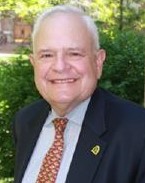Lehigh University
Office or Center Name Here
Phillip L. Gould
Distinguished Adjunct Professor, St. Louis University and Senior Professor, Washington University, St. Louis, MO
From Slide Rule to FEA: Some Stops Along the Way
Friday,March 20, 2020– 4:30 pm
Location: Whitaker Lab 303, Lehigh University,5 E. Packer Avenue, Bethlehem, PA
Phillip Gould, Ph.D., P.E., S.E., Dist. M ASCE, joined Washington University in 1966 after completing his B.S. and M.S. at the University of Illinois, enjoying a short but rewarding career as a structural engineer, and finishing doctoral studies at Northwestern University. He was the Harold D. Jolley Professor of Civil Engineering from 1981 until 2010 and served as department chair for 20 years. His research activities have centered on shell analysis with applications to finite element modeling, biomedical engineering, earthquake engineering, and the structural design of thin-shell structures. Dr. Gould is the author of numerous papers and several books and is the founding editor of the prestigious journal, ENGINEERING STRUCTURES and has served as a consultant to industry and government organizations.
From Slide Rule to FEA: Some Stops Along the Way. Brief comments on the authorís professional career, from an aspiring structural designer of buildings and bridges to further graduate study and then an academic and research career, are offered. Dr. Gouldís subsequent academic and professional activities initially focused on thin -shell analysis, especially the emerging field of hyperbolic cooling towers. The advanced capabilities of the SHORE family of computer programs that were developed in the course of the shell research provided an important tool in the design and explanation of some unique extreme loading situations for both cooling towers and chimneys. As his career progressed, he became very involved in earthquake engineering with strong focus on education and mid-America issues. In the course of teaching graduate subjects, he authored several textbooks and enabled the dissemination of current knowledge as editor of the journal ENGINEERING STRUCTURES.
In deference to the namesake of this lecture, based on recollections of a junior engineer working closely with Fazlur Khan, Dr. Gould offers some observations on Khanís early career. These include his applications of classical structural engineering methods in the pre-computer era and his outstanding interpersonal relationships with architects, engineers and members of the building community.
Moving on to applications of the research of Dr. Gould and his students, potentially destructive loading conditions that have impacted chimneys and cooling towers are briefly described. While chimneys and cooling towers of increasing height have been successfully constructed for decades, in the present context of resiliency they both possess an undesirable structural characteristic in that they are globally statically determinate. Dr. Gouldís studies of extreme events that caused a severely damaged cooling tower and a collapsed chimney are used to illustrate selected aspects of their structural performance. The response of each structure is examined with the objective of validating and augmenting design characteristics that may improve their behavior under any imaginable loading condition. The application of nonlinear analysis techniques that may be useful in predicting the response of such structures to multihazard design conditions beyond current code requirements is suggested.
